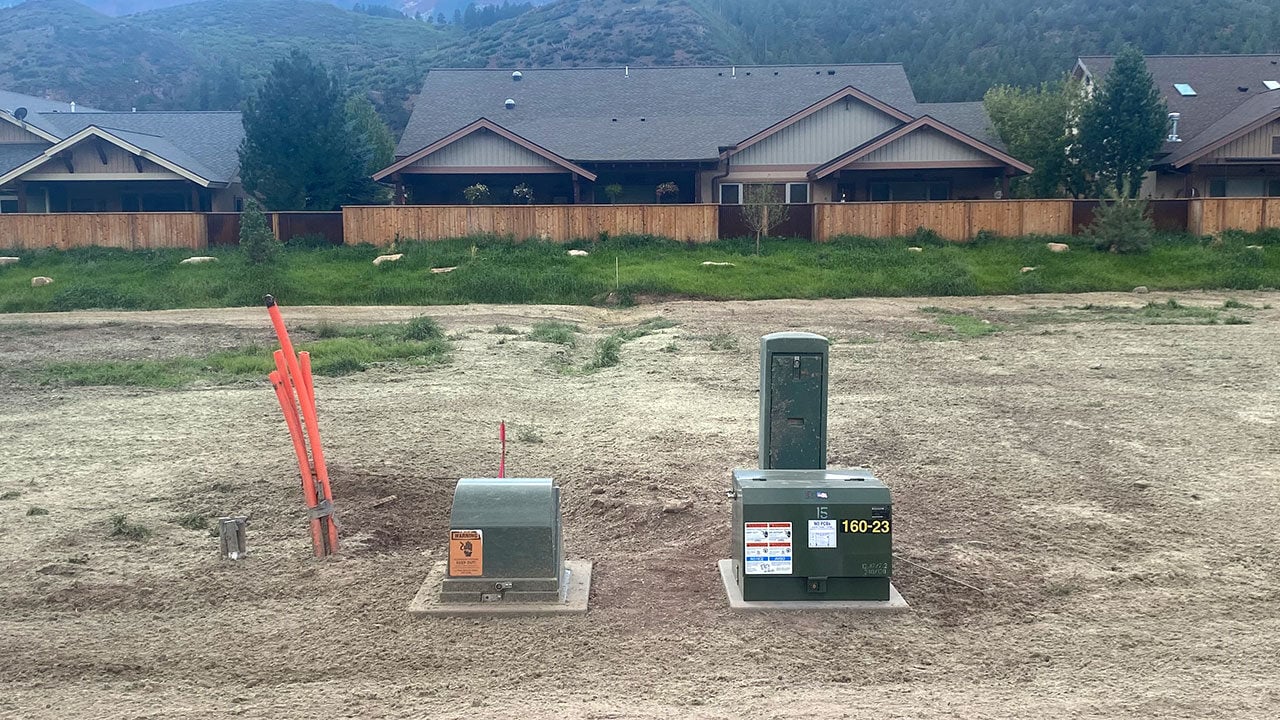Developing a residential subdivision is much more than just plotting streets and homes; it’s about building a community that’s well-equipped to thrive today and adapt to future needs. Among the critical factors for achieving this is the thoughtful placement and coordination of utility systems like water, electricity, gas, and telecommunications. Failing to plan for these utilities can lead to costly delays, disruptions, and decreased property value.
The impact of well-placed utility lines on residential subdivisions cannot be overstated, this is where utility coordination comes in and why it’s so crucial.
Maximizing Lot Value through Utility Placement
Properly locating utility lines can significantly enhance the value of individual lots within a subdivision. This is because strategic utility placement maximizes the usable space on each lot, allowing developers to create more flexible home designs and landscaping options. The added flexibility increases the overall appeal and functionality of the properties, contributing to their value.
In addition to optimizing space, thoughtful utility planning – such as placing utilities underground – helps preserve the neighborhood's visual appeal. By minimizing the presence of above-ground elements like telephone poles and transformers, the aesthetic charm of the area is maintained, making it more attractive to potential buyers. A study from Pacific Gas and Electric (PG&E) reported that properties in areas where utility lines were buried saw increases in value anywhere from 2.5% to 10%. This combination of usability, aesthetics, and convenience increases both the desirability and the value of the properties.
Preventing Future Utility Conflicts
Utility conflicts can result in costly delays and complications both during construction and throughout the lifespan of a development. Properly locating utility lines is key to avoiding these issues. Accurate mapping and placement of utility lines help prevent accidental damage during construction, which not only saves money on repairs but also avoids delays in the project timeline. When the original design is precise and followed as planned, the need for major revisions to as-built plans is minimized, reducing the risk of misinformation.
These well-planned utility layouts make it easier for maintenance crews to access and repair lines, decreasing the likelihood of prolonged service interruptions and ensuring that the neighborhood remains functional and safe over time.
Compliance with Regulations
Utility placement in subdivisions is governed by a combination of local, state, and federal regulations to ensure safety, accessibility, and environmental compliance. Local regulations often dictate the specific layout and zoning requirements, such as easements, setbacks, and proximity to other infrastructure like roads and homes. State regulations may enforce broader guidelines, including building codes, utility service standards, and environmental protection laws. At the federal level, agencies like the Federal Communications Commission (FCC) and the Environmental Protection Agency (EPA) set standards for utilities such as telecommunications and water systems, assuring that projects comply with national safety, environmental, and accessibility standards.
By adhering to these regulations, developers not only avoid costly penalties and delays but also enhance the overall quality and marketability of the subdivision. Plus, thorough compliance streamlines the approval process, allowing projects to move forward efficiently and smoothly.

Future-Proofing the Subdivision
As technology continues to advance, the demand for utilities such as high-speed internet and fiber optics will only increase. Optimally locating these lines from the start is crucial for ensuring that the subdivision can meet future technological advancements without the need for costly retrofitting. Incorporating redundancy through parallel connections strengthens utility systems, especially in subdivisions at the rural-urban interface.
With the rise of remote work, access to high-speed internet has become a vital factor for homebuyers. More residents now require reliable, fast connections for video conferencing, online collaboration, and large data transfers. Subdivisions that are equipped with advanced internet infrastructure are better positioned to attract and retain homeowners who depend on these services. By planning for this increased demand, developers can facilitate the long-term success and competitiveness of their communities in a work-from-home era.
Enhancing Safety Through Utility Coordination
Utility coordination is not just about improving functionality and connectivity, it's also an important factor in enhancing safety within subdivision developments. A well-designed underground utility system provides a layer of protection for the subdivision's infrastructure against environmental elements like wind, water, hail, lightning, and other severe weather conditions. By burying utilities underground, developers can significantly reduce the risk of damage caused by these natural forces, which often lead to costly repairs, outages, and disruptions for residents.
Proper utility planning ensures that systems like gas, water, electricity, and telecommunications are placed in safe, appropriate locations, minimizing the potential for hazardous situations like gas leaks, electrical faults, or service interruptions. This thoughtful utility design not only safeguards infrastructure but also provides peace of mind to homeowners, knowing that their essential services are well-protected from both everyday wear and tear and extreme weather events.

Enlisting an Experience-Based Process
SEH's Land Development team has designed and laid out thousands of residential lots, making them experts in utility coordination for sewer, water, gas, electric, and fiber optic line connections. The SEH process follows a comprehensive, step-by-step approach to utility design, which begins well before the approval and construction phases:
- Assessing Needs: The process begins by working with the developer to verify the desired home sizes and layouts, ensuring the utility plan meets the specific needs of the subdivision.
- Demand Projection: Next, sewer and water demands for the development are projected, confirming capacity will meet current and future needs.
- Coordination with Service Providers: Collaboration with local service providers for sewer, water, gas, electric, and fiber follows, assessing their current infrastructure and determining if any upgrades are necessary.
- Utility Design: A comprehensive system is then designed, including the layout of dry utilities (gas, electric, fiber) to maximize lot value while minimizing infrastructure costs. The team is well-versed in code requirements, ensuring all design elements work together seamlessly.
- Securing Approvals: As the project moves through approval stages with local municipalities, ongoing coordination with private utility providers (gas, electric, fiber) continues to verify they remain on the construction schedule. This helps avoid costly delays, a common challenge for developers.
- Construction Coordination: Once construction begins, the team works closely with the developer, their contractor, and utility contractors to ensure smooth coordination, minimizing delays and securing timely installation of all utilities.
- Final Verification: Finally, the team addresses any conflicts that arise during construction and verifies that all utilities are installed according to the approved plans. This guarantees that when homeowners and builders begin work on individual homes, the necessary utilities are ready for immediate connection.
Properly locating utility lines in residential subdivisions is not just a matter of compliance; it's a strategic decision that can significantly enhance property values, ensure safety, and future-proof the community. By optimizing lot values, minimizing utility conflicts, adhering to regulations, and planning for future needs, municipalities can create subdivisions that are attractive, functional, and sustainable.
For those looking to make the most of their residential development projects, SEH offers unparalleled expertise and a proven approach to utility design with robust, cost-effective systems that are straightforward to construct, providing significant value to clients.
About the Expert

Steve Winters is a project manager and professional engineer* with extensive experience in highway, utility, and drainage design, as well as construction inspection, construction administration, project management, and site planning. He has worked on a wide variety of public and private infrastructure contracts including rural and urban, mountainous and desert, and new and rehabilitation projects.
*Registered Professional Engineer in AZ, CO

.png?width=113&name=SEH_Logo_RGB%20(1).png)
